1.2: Is The Climate Changing?
Global Temperature Rise
The overall trend of increasing temperatures can be seen from multiple agencies from different parts of the world
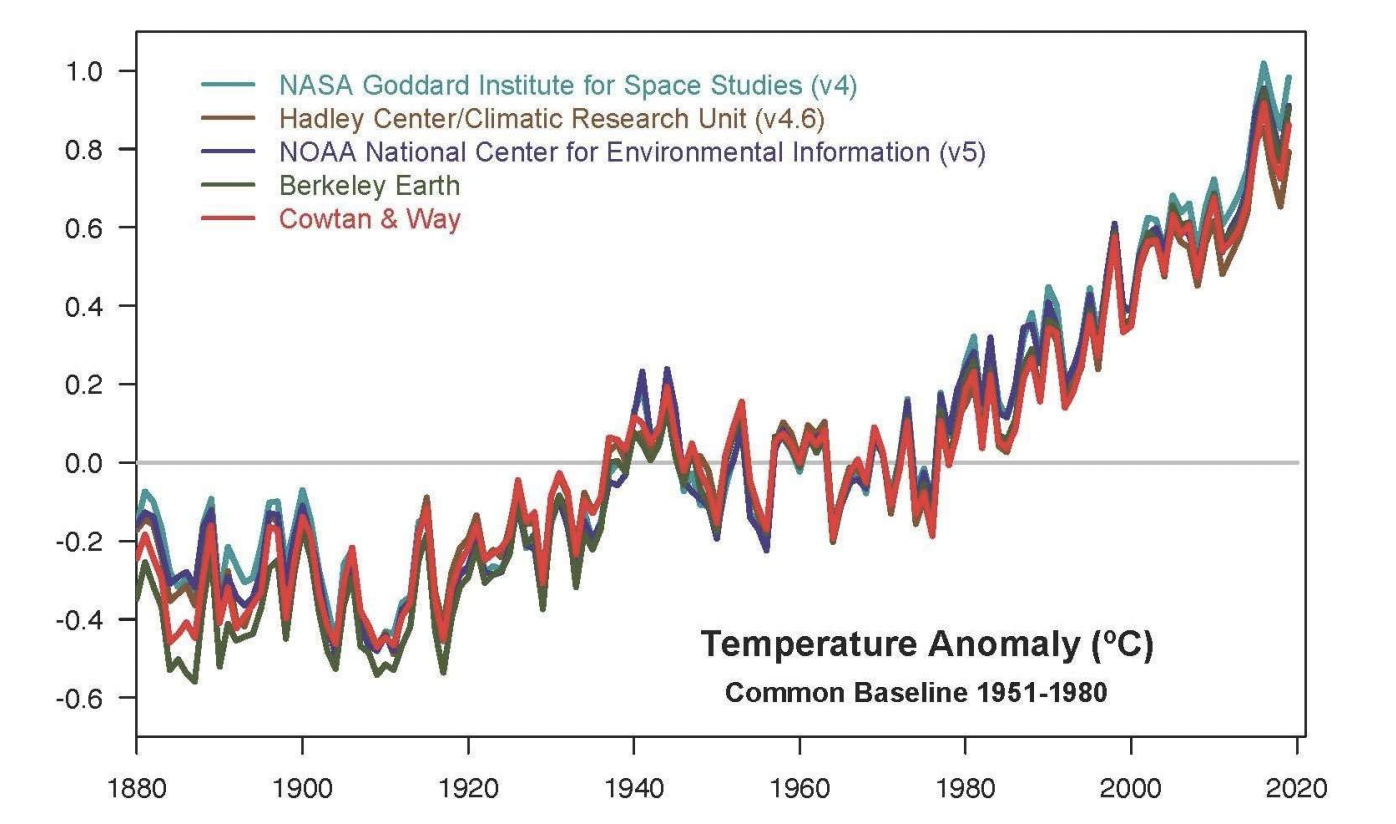
NASA’s Temperature Record
NASA has kept record of annual average temperature since 1880 and found that 2022 was the fifth-hottest year on record
The Goddard Institute for Space Studies (GISS) records Earth’s surface temperature (GISTEMP)
- This shows a clear increase in Earth’s temperature
- GISTEMP collects records from weather stations, Antarctic research stations, ships, and ocean buoys around the world
Their work is verified through comparing data with organizations such as the National Oceanic and Atmospheric Association (NOAA)
NASA also checks work with their own satellites orbiting the Earth and obtaining atmospheric readings
All of the evidence that NASA and other organizations have collected asserts that Earth’s climate is warming
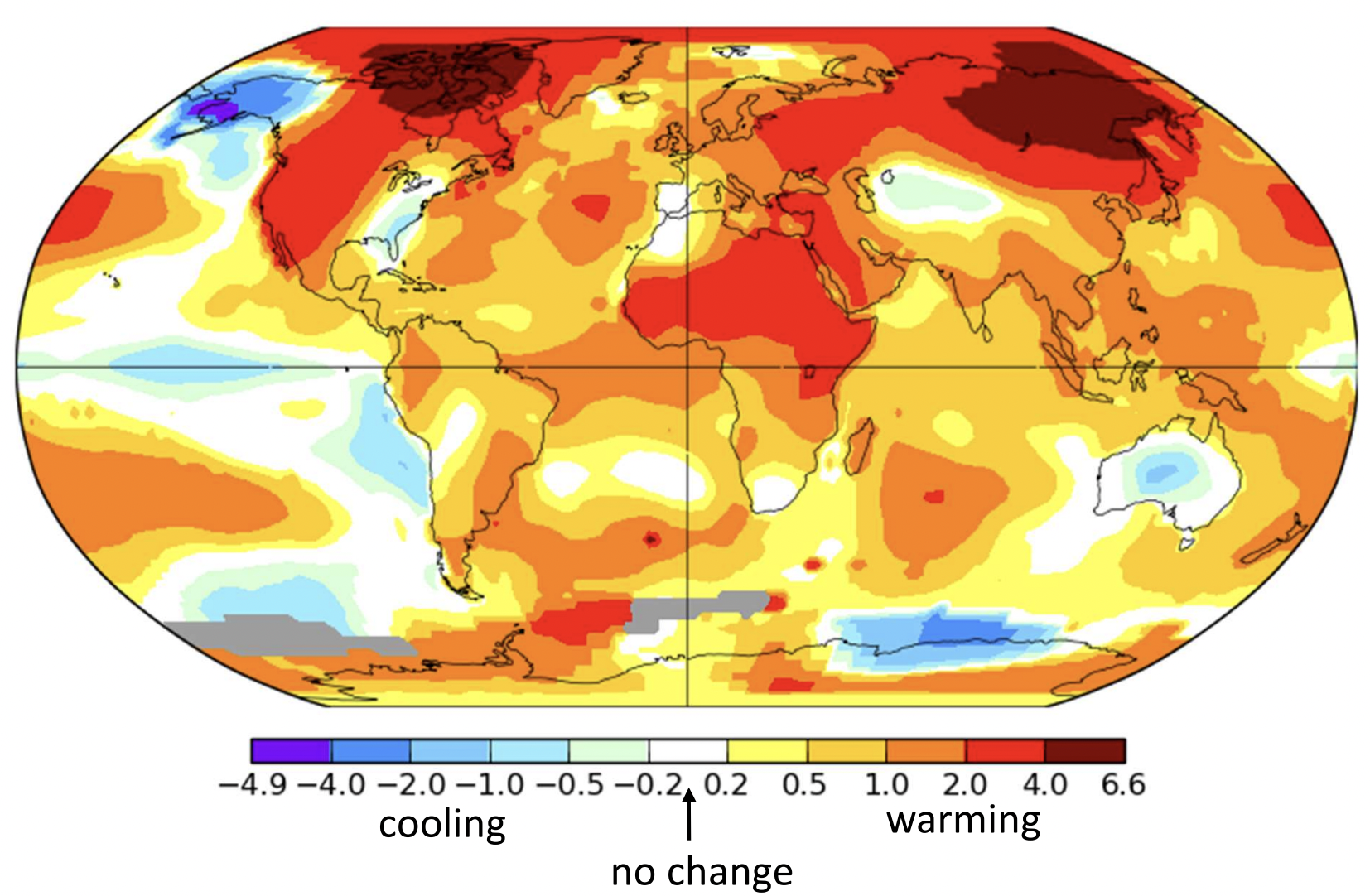
The red/orange/yellow areas indicate overall warming, though some areas have cooled
Land areas warmed more than the ocean
Polar regions saw the most significant increase in temperatures
Shrinking Glaciers
Glacier: a permanent body of ice that forms where climates are cool enough to maintain snow all year long
- Most often found at high altitudes in the mountains and high latitudes in polar regions
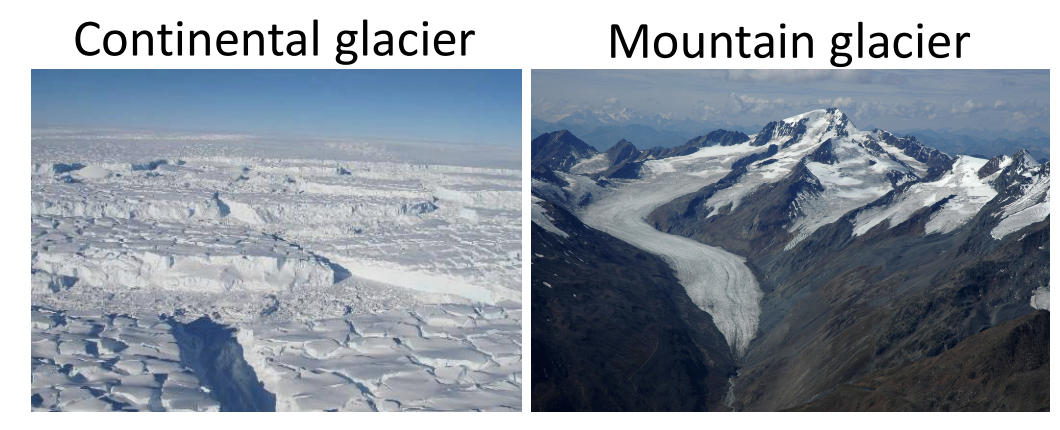
- Most often found at high altitudes in the mountains and high latitudes in polar regions
Glaciers form when fresh snow lands on a ground surface; due to the cold temperatures, it does not fully melt over the course of a year. The next year another layer of snow will be deposited on top.
Over time the snowflakes lose their edges and the snow becomes more tightly packed.
With further burial, the snow transforms into a packed granular material called firn
As layers of snow accumulate, the weight compresses the lower layers into glacial ice.
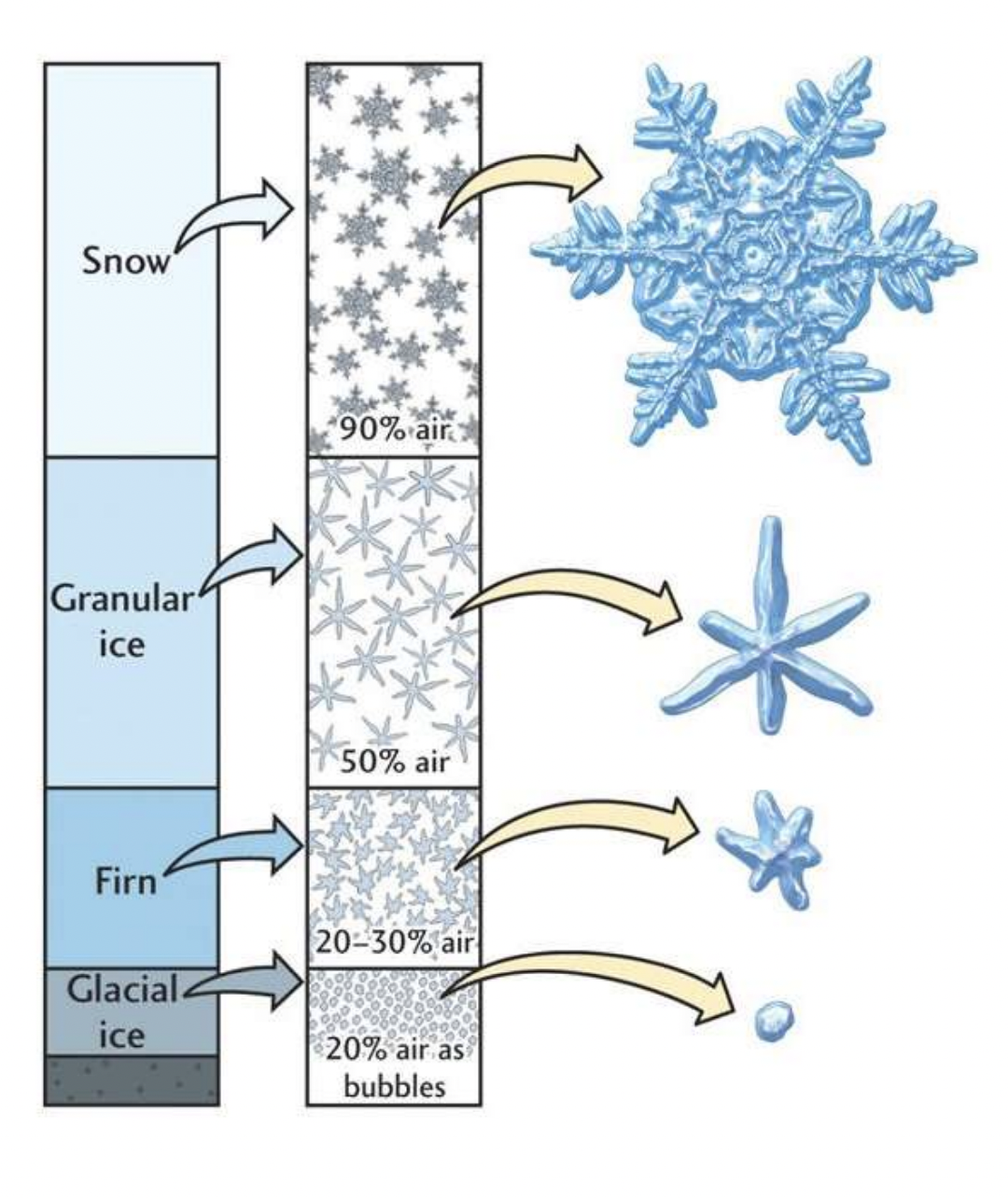
Rising global temperatures increase the melting rate of glacial ice
- If the melting rate becomes faster than the rate of snow accumulation, it results in a net loss of ice
- Over time, this can lead to a dramatic retreat or shrinking of glaciers
- This is a trend that has been observed in glaciers worldwide; the most dramatic changes are observed in places where the warming has been the greatest
Greenland and Antarctica
- Earth’s two major ice sheets (continental glaciers) are located in the polar regions
- North: Greenland
- South: Antarctica
- NASA/German Aerospace CenterGravity Recovery and Climate Experiment (GRACE) satellites found that between 2002 and 2016, Greenland shed ~280 gigatons of ice/year and Antarctica shed ~125 gigatons of ice/year
Declining Arctic Sea Ice
- Not all ice on Earth is on land
- Large areas of ocean that are in polar climates freeze due to the cold temperatures and form a layer of ice covering the ocean: sea ice
- A decline in Arctic sea ice over the last several decades has led to significant impacts on the Earth’s climate as a whole and the lives of the animals who live in the Arctic
Ocean Temperatures
- The ocean temperature is increasing, but at a slower rate than land temperatures
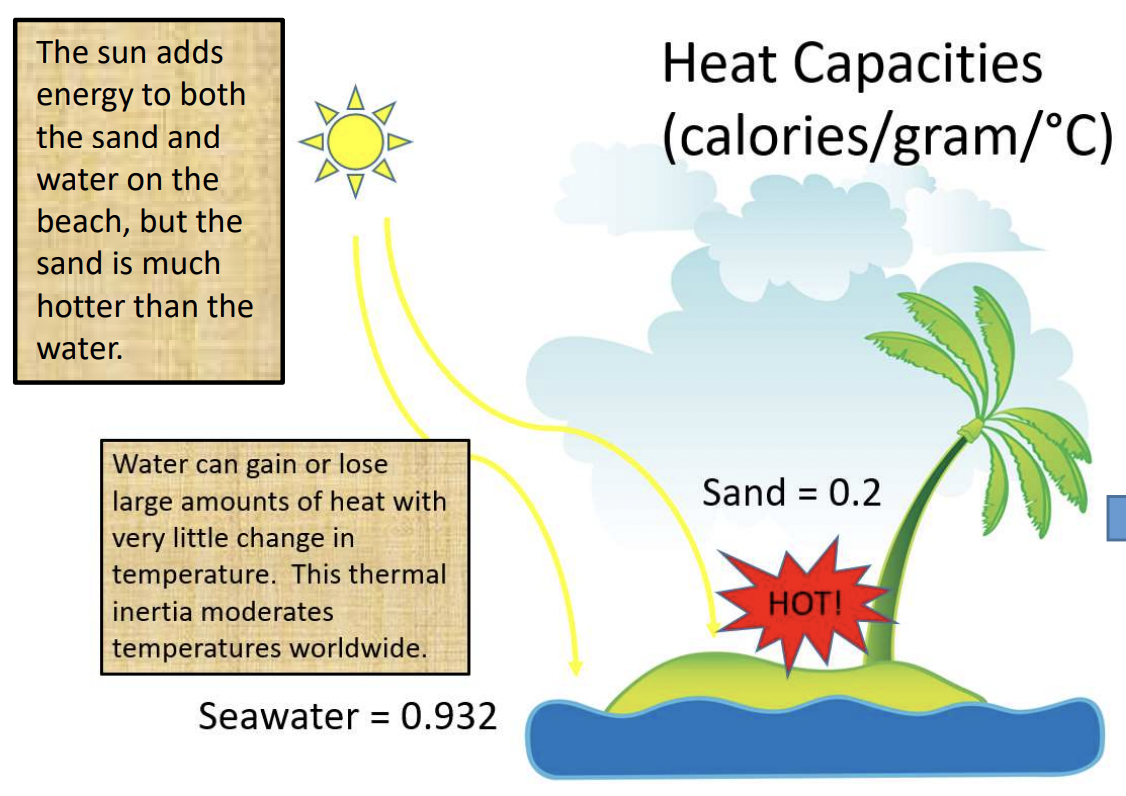
- Due to water’s high heat capacity, an increase in ocean temperature (even a small one) indicates a large amount of extra energy that Earth has absorbed
Changes in Sea Level
- From 1901-2010, the average rate of sea level rise was 1.7 mm/year; global sea level is now rising 3.4 mm/year
- Sea level is not just rising, the rate of increase is accelerating
- Warming will accelerate this trend by:
- Thermal expansion of seawater — as water temperature increases, water expands and occupies more space
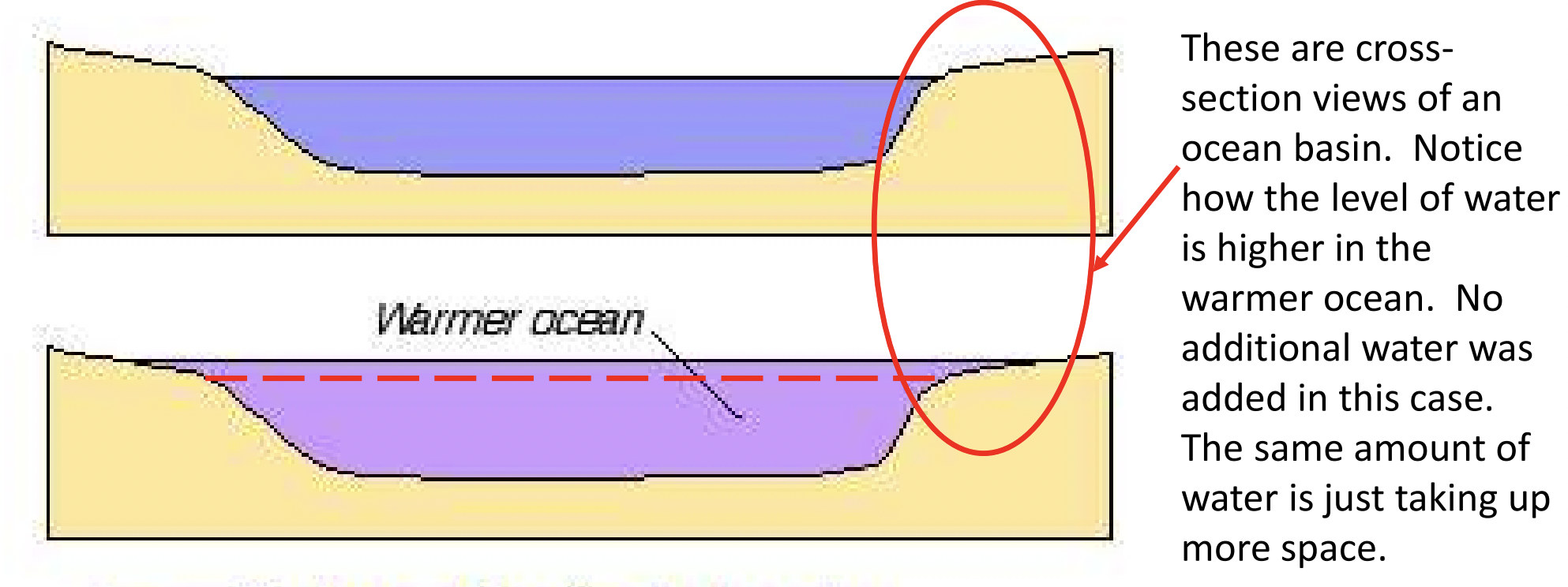
- Increased melting of land ice — extra water added to the ocean from the melting of ice sheets on land
- When ice on land melts, that water drains to the ocean, thereby adding more water to the basin
- This causes an increase in sea level
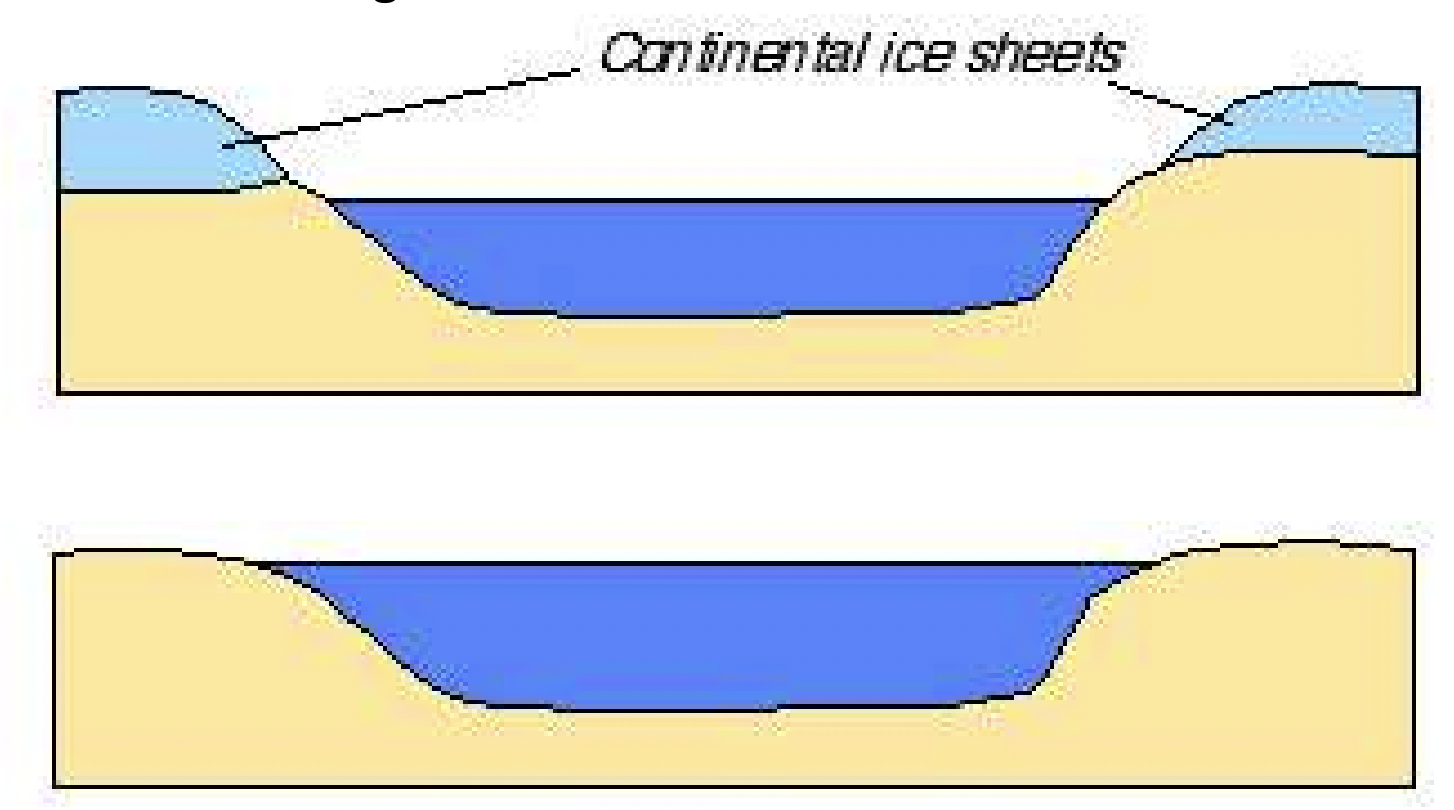
- When the sea level rises, this causes the shoreline to shift landward
- This change will affect coasts differently based on the topography and landforms at each location
- Areas like the west coast of the U.S. have a mountainous coast and will be less affected by rising seas than areas on the east coast of the U.S. that have a very low coast such as Florida
- Only melting land ice (not melting sea ice) is important when it comes to the issue of rising sea level
- Displacement: sea ice is in the water, so its volume is already taken into account by the level of the ocean
- Similar to ice cubes in a glass; when the ice melts, the level of water in the glass remains unchanged because the ice displaces an equal volume of water
- Melting land ice is different as this is introducing more water to the system and thereby increases the water level, similar to pouring more water into a glass
- Though not impacting sea level, melting sea ice still has significant negative consequences
- Thermal expansion of seawater — as water temperature increases, water expands and occupies more space